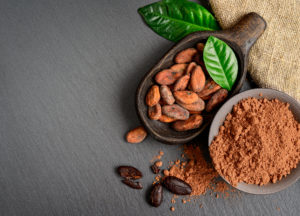
Peripheral artery disease or PAD is a narrowing of the arteries that reduces blood flow from the heart to the legs. It is estimated to affect over 8.5 million people 40 years of age and older nationwide. The most common symptoms are pain, tightness, weakness, cramping, or other discomfort in the leg muscles while walking.
Lead study author Mary McDermott, M.D., said, “Few therapies are available for improving walking performance in people with PAD. In addition to reduced blood flow to the legs, people with peripheral artery disease have been shown to have damaged mitochondria in their calf muscles, perhaps caused by the reduced blood flow. Mitochondria are known as the powerhouse of the cell, converting food to energy. Previous research has shown that better mitochondrial health and activity are associated with better walking performance and improving the health of damaged mitochondria could lead to walking improvements.”
The study led by McDermott and her colleagues looked at 44 peripheral artery disease patients over the age of 60. They were required to drink either milk or water containing a powder package of flavanol-rich cocoa three times a day for six months. Walking performance was measured at the beginning of the study and at six months with a 6-minute walking test, 2.5 hours after drinking the beverage, and 24 hours after drinking the beverage. Participants were also given a treadmill walking test and had the blood flow to their legs measured using magnetic resonance imaging (MRI). Some participants who consented had a calf muscle biopsy to evaluate muscle health.
Improved Walking and Blood Flow
It was found that the participants who drank the cocoa were able to walk up to 42.6 meters further in a 6-minute walking test compared to those who drank the same number and type of beverage without cocoa. It was also noted that participants who drank the flavanol-rich cocoa had improved blood flow to their calves and some increased capillary density compared to the placebo group.
The research team hypothesized that epicatechin, a major flavanol component of cocoa, may have increased the mitochondrial activity and muscle health in the calves of patients with lower extremity peripheral artery disease, which could have affected their walking ability. Epicatechins and flavanols also have the potential to improve blood flow.
“While we expected the improvements in walking, we were particularly pleased to see that cocoa treatment was also associated with increased capillary density, limb perfusion, mitochondrial activity, and an additional measure of overall skeletal muscle health,” McDermott said. “If our results are confirmed in a larger trial, these findings suggest that cocoa, a relatively inexpensive, safe and accessible product, could potentially produce significant improvements in calf muscle health, blood flow, and walking performance for PAD patients.”
There were certain limits to the study, including a small sample size, an imbalance between the two-study groups in the number of participants of each sex, race and body mass index, and a lack of data for overall dietary consumption. Because of these limitations, more in depth research is needed, but researchers hope this can continue to help people with PAD walk farther and help physicians to offer effective treatments.